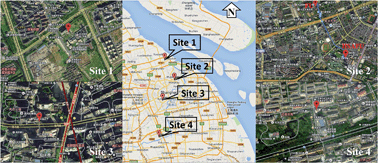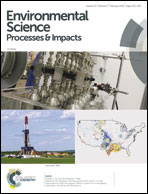Performance assessment of a portable nephelometer for outdoor particle mass measurement
Abstract
The availability of portable nephelometers has improved assessment of exposure to atmospheric particles at a high resolution regarding space and time. However, nephelometer performance has seldom been evaluated for outdoor measurements, especially in Chinese cities. During 37 days of measurements at four outdoor sites in Shanghai, we assessed a popular nephelometer called SidePak (TSI Inc., USA) for PM1.0, PM2.5 and PM10 mass measurements and compared them to US federal reference methods (FRMs) based on different measurement principles. The nephelometer showed high measurement precision and stability and was strongly correlated with FRMs, making it superior to the portable light scattering monitors reported in the past and thus indicating the maturity of this principle. The nephelometer measurements overestimated all those of FRMs by a factor of two, which is higher than in evaluations in other international cities. This overestimation showed a descending order for PM1.0 (2.9-fold), PM2.5 (2.2-fold) and PM10 (1.9-fold) relative to the FRMs of tapered element oscillating microbalance or beta attenuation combined with nephelometry, based on whole samples. Sites that are far from direct pollution sources showed very good agreement between the nephelometer and FRMs for PM2.5 mass measurements, while, by comparison, the roadside site showed a lower SidePak/FRM PM2.5 ratio, which is likely due to higher abundance of elemental carbon in roadside particles. Relative humidity (RH) was shown to be a key factor that distorted the measurement of the nephelometer. An empirical formula incorporating an RH adjustment developed to correct the nephelometer could produce a reasonable result, even across the various sites. This study demonstrates the great potential of the nephelometer for outdoor particle mass measurements, but for accurate and comparable data, a site-specific calibration is strongly recommended before using.



 Please wait while we load your content...
Please wait while we load your content...